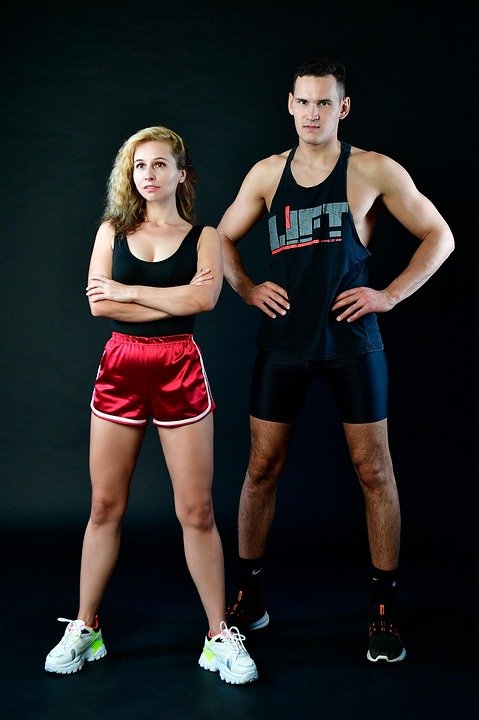The United States Marine Corps will celebrate their 250th anniversary on Nov. 10, 2025. “The few and the proud” has seen many changes over the years. One such change came in 1801 when Archibald Sommers became the first Sergeant Major. 20 men have held that position, including the 20th and incumbent, Sergeant Major Carlos A. Ruiz. Ruiz may have an office in the Pentagon, but he still takes great joy being at various bases around the world alongside the men and women he leads.
“There are a few Marines here, but the Marines are in Camp Pendleton, they’re at (Camp) Lejeune, the Marines are over the globe, and that’s where I need to be,” said Ruiz. “I’m lucky I get to do that.”
Ever since he was a child growing up in Mexico playing soccer and watching the NBA, Ruiz has been very active. After moving to the United States, he found himself on his high school’s basketball team. His joy from sports and being active may be why joining the Marines felt like a perfect fit for him when he signed up in 1993. However, even as someone that was in great shape, Ruiz admitted to being a little overwhelmed at the requirements of service.
“That led to joining the Marine Corps and not being very intimidated by the physical fitness part of it because ‘ok, it couldn’t be that much.’ I was wrong,” Ruiz said with a laugh. “I was so wrong, but I had a great start.”
Leading From the Front By Example
For Marines, physical fitness is part of the foundation. That is why physical training (PT) is so important, whether they are in the Pentagon, on a mission, or stationed at the iconic 8th and I.
Throughout his career, Ruiz had served in several roles, including as a recruiter and drill instructor. As the highest enlisted member of his branch today, Ruiz knows he must not only meet the standard but push himself to do and be more. That’s why he chose to run in the Marine Corps Marathon after someone suggested it.
“I knew that there would be thousands and thousands of veterans in that marathon holding me accountable. They didn’t expect me to finish in two and a half hours, but I better finish.”
Ruiz will do the same at the 2025 Marine Corps Marathon on Oct. 26th. He could push himself to complete the marathon, but he doesn’t have to. His wife Andrea does a great job of that for him.
“She’s way faster than me. Because of that, it’s five miles every day, whether it’s at 2200 or 0400, I got to get my five miles in, and then my long run on Saturday or Sunday.”
Advocacy For The Betterment of His Marines
As the senior enlisted Marine, Ruiz serves as the voice for his entire branch. He feels that for each Marine to fulfill their pledges, they must be at their physical, mental, and emotional best every day. He uses his role and voice to advocate for them by speaking out about their needs so they can do what they agreed to do and be better off for it once they transition into veterans. Some of those needs range from tailored kits to trackable metrics technology, and beyond.
“That’s why I advocate for better food for our Marines and better barracks. That is in line because we are expecting so much of our Marines to be fit,” Ruiz explained. “The service has a responsibility to deliver the infrastructure such as the quality food, people in the gyms, sleep doctors, and everyone that can help them be better warfighters. That’s what the organization must deliver.”
He concluded, “If I had a dream, it would be to treat servicemembers as Division I athletes. We’re getting closer, but we’re still behind. That’s where we’re going, though.”
Don’t Try To Do It Alone
Whether you’re looking to join the Marines for a full career, serve for a shorter stint, or simply want to be better for yourself and those around you, Ruiz is always eager to share wisdom from his three decades of experience. When it comes to training, he sees the value of not only holding someone else accountable but making sure they are doing the same for you as well.
Ruiz said, “Balance your individual workouts with partner workouts.” It’s respectable to put headphones and focus completely on yourself, but the 20th Sergeant Major advised that having someone there to push you will help you find more reps, steps, and break barriers you may be tempted to avoid going solo.
“It will help you as you enter our service because in our service, we like to PT together. That is something I never want to lose.”
That physical component must also be matched by a strong will and desire to carry on. Ruiz confirmed that boot camp is still the place where civilians become Marines, and part of that transition is going past previously conceived limits. Being around other future Marines as well as the drill instructors like Ruiz used to be help push them beyond what they would likely do on their own.
“They have to push past that very young voice that is screaming ‘hey, this is hard. Quit.’”, Ruiz explained. “So, you get used to the concept of ‘we don’t quit.’”
Open Invitation To Make a Difference
After years of recruitment struggles across all branches, the tide is turning. That means more young Americans are seeing the benefits of service and the value in making a difference while being a part of something bigger than themselves. Ruiz made it clear that those that are weighing their options could and should consider being one of the few and proud so they can help continue carrying the legacy of the Marines forward as they enter the next 250 years.
“Along the way, they realize it’s not an accident they are in service. There’s something inside of them that makes them different,” Ruiz proclaimed. “It’s about people and improving yourself.”
Ruiz looks forward to meeting more Marines and seeing the next generation of heroes wearing the nation’s cloth. He just advises that they should prepare to face challenges and be willing to rise above them, and that includes exceeding physical standards that may not have been possible before.
“Being physically fit is an indispensable asset of being a Marine. You better get after it every day.” For more information on the Marines, go to their website.
M&F Senior Military Editor Rob Wilkins contributed to this article.
This post is brought to you by: Source link
Sergeant Major Carlos A. Ruiz is Helping Marines Worldwide Be Better Fit To Serve, 2025-10-03 11:29:00
















